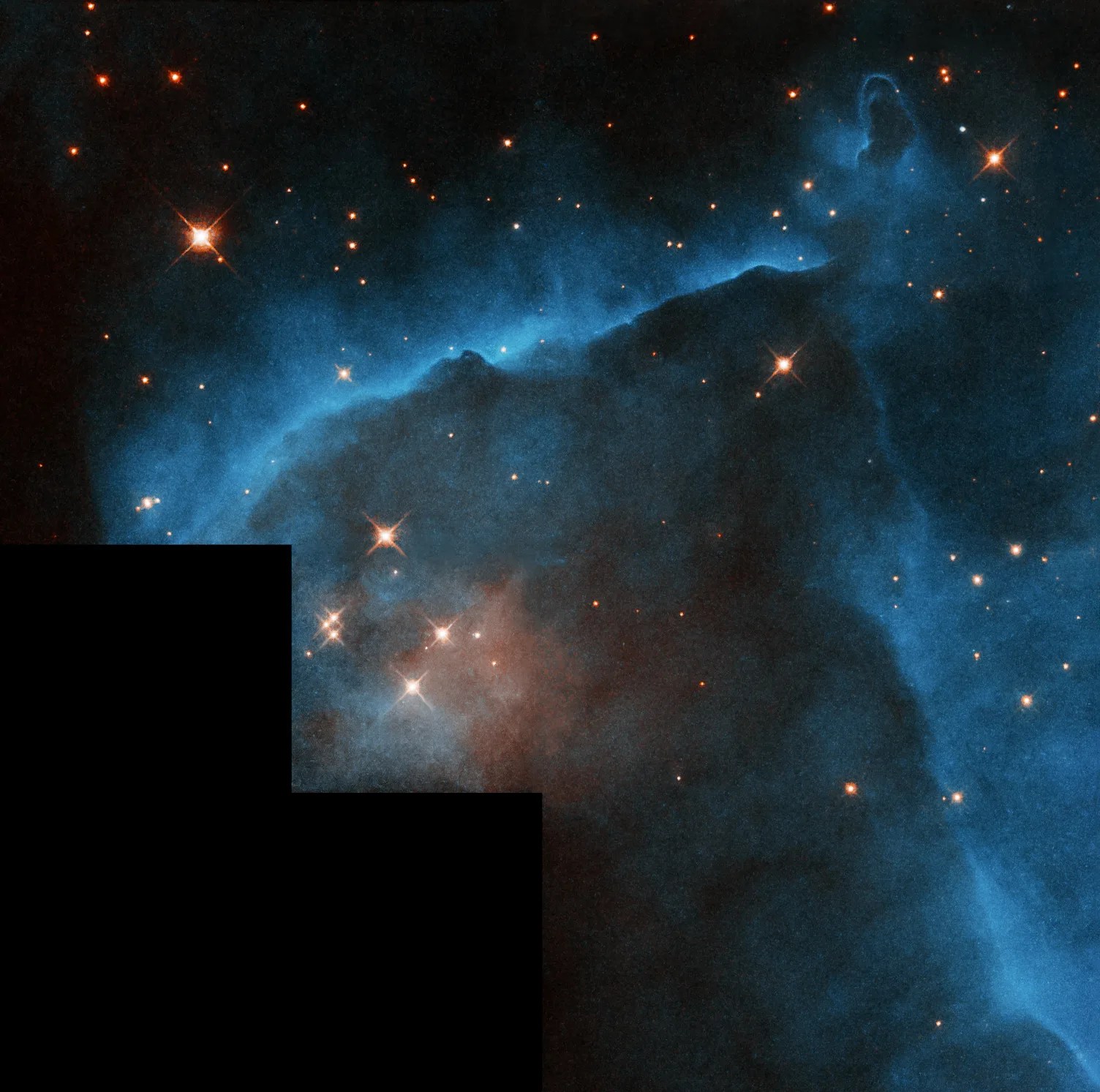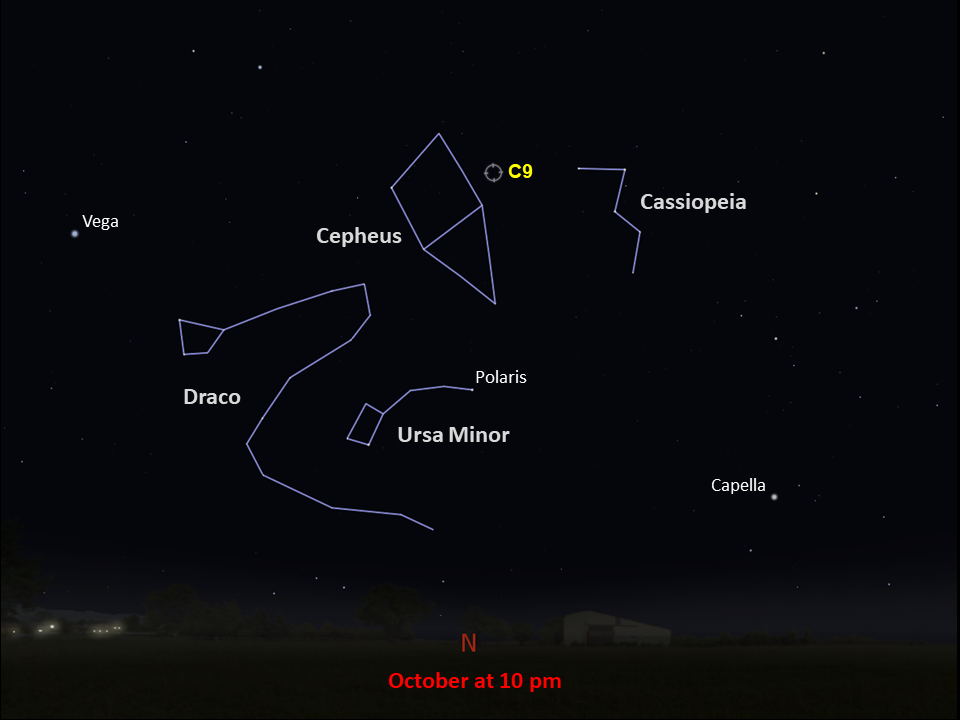Caldwell 9
Also called the Cave Nebula, Caldwell 9 is an area where new stars are forming.
Distance
3,000 light-years
Apparent Magnitude
8.0
constellation
Cepheus
object type
Emission Nebula
A mysterious, yawning mouth of gas and dust gives Caldwell 9 its popular nickname, the Cave Nebula. The nebula is actually part of a much larger cloud of gas and dust called Cepheus B, named after its home constellation, Cepheus. This image of Caldwell 9, captured by Hubble’s Wide Field and Planetary Camera 2, shows just a small portion of the nebula near the mouth of the cave.
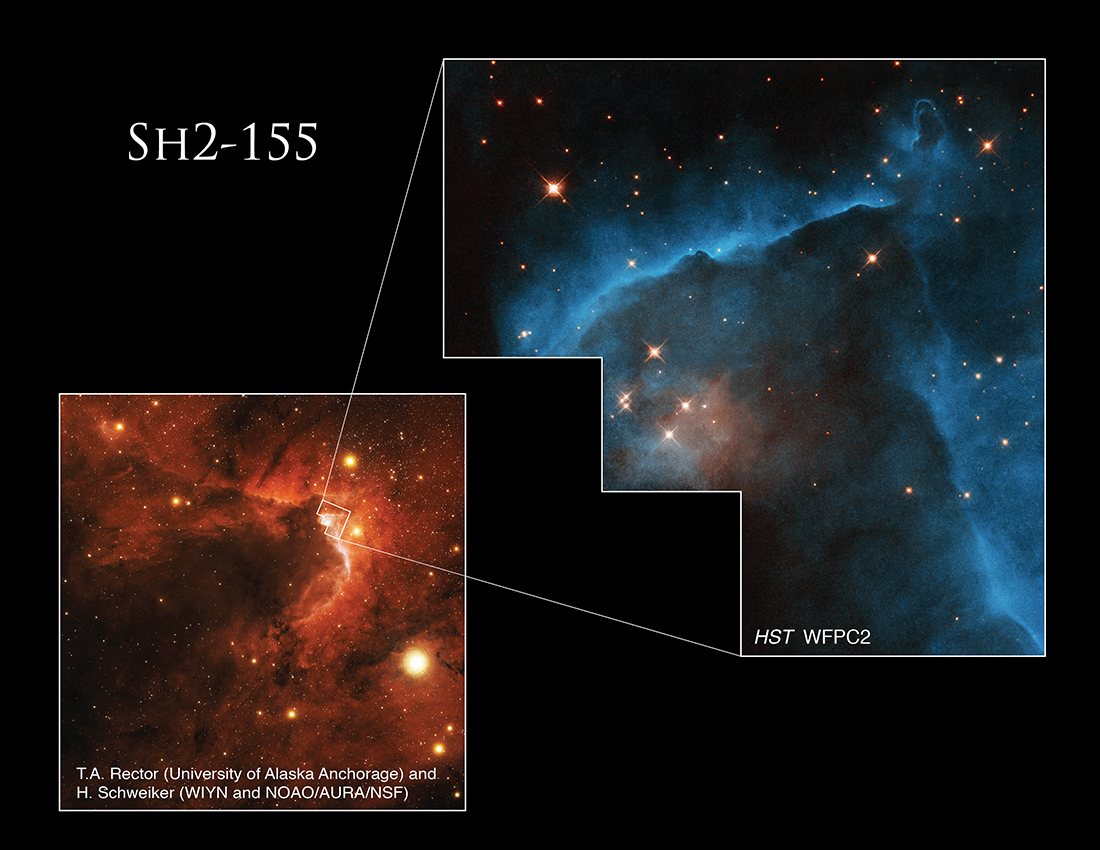
Roughly 3,000 light-years away and lying in the plane of our Milky Way galaxy, the Cave Nebula is an emission nebula, formed of gases that emit their own light. The bright arc that forms the mouth of the cave is an active birthplace for stars, known as an H II region, where hot clouds of atomic hydrogen have become ionized.
Though boasting a magnitude of about 8 and a span of roughly 40 light-years, Caldwell 9 is a diffuse and low-contrast object, so it can still be difficult to find in the sky. Its first known notation, in fact, was not until 1959 after astronomer Stewart Sharpless captured it on photographic plates and included it as the 155th object in his second catalog of H II regions, giving Caldwell 9 its alternate catalog name, Sh2-155.
Caldwell 9 is tantalizing to researchers because, according to radio and near-infrared studies of this nebula, the area is bursting with young, hot stars popping into existence. Investigating such regions of star birth helps astronomers learn more about how stars begin their lives. Hubble’s Wide Field and Planetary Camera 2 imaged this region of Caldwell 9 in 1995 to search for signs of planet-forming disks around young stars in the nebula, similar to disks Hubble had previously spotted in the Orion Nebula (M42).
Caldwell 9 can be best viewed in early autumn in the Northern Hemisphere. In the Southern Hemisphere, the best opportunity to see it is during the spring, from sites close to the equator. The Cave Nebula is faint and one of the most difficult Caldwell objects to spot, so to search for it, use a large telescope far from city lights on a clear, dark night. If possible, use a nebula filter to dim other sources of light and improve your view of this challenging target.
Glossary
Emission Nebula - A cloud of ionized gas that emits energy at wavelengths across the electromagnetic spectrum, causing it to glow with vibrant colors.
HII Region - An area with an abundance of ionized atomic hydrogen, where thousands of stars can form over a couple million years.
Ionization - The process by which particles become electrically charged; radiation from various astronomical sources, such as stars, can charge surrounding gases with electromagnetic radiation, causing these clouds of gas to glow.
Magnitude - The brightness of an astronomical object, represented by a number; bright objects have low numbers on the magnitude scale, while dim objects have high numbers.
Nebula - An interstellar cloud of dust and gas; either a location where new stars are being forged or a cloud of material ejected into space by a dying star.
Explore Hubble's Caldwell Catalog
The following pages contain some of Hubble’s best images of Caldwell objects.
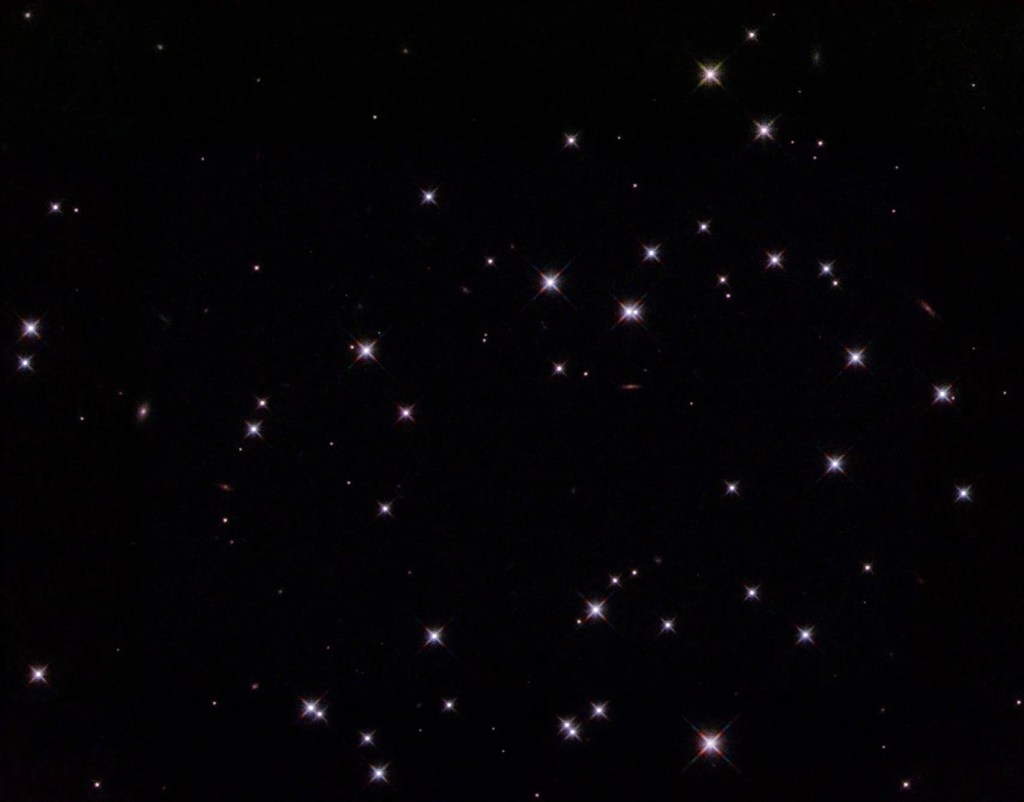
Also known as NGC 188, this group of stars formed from a large cloud of gas making the stars roughly…
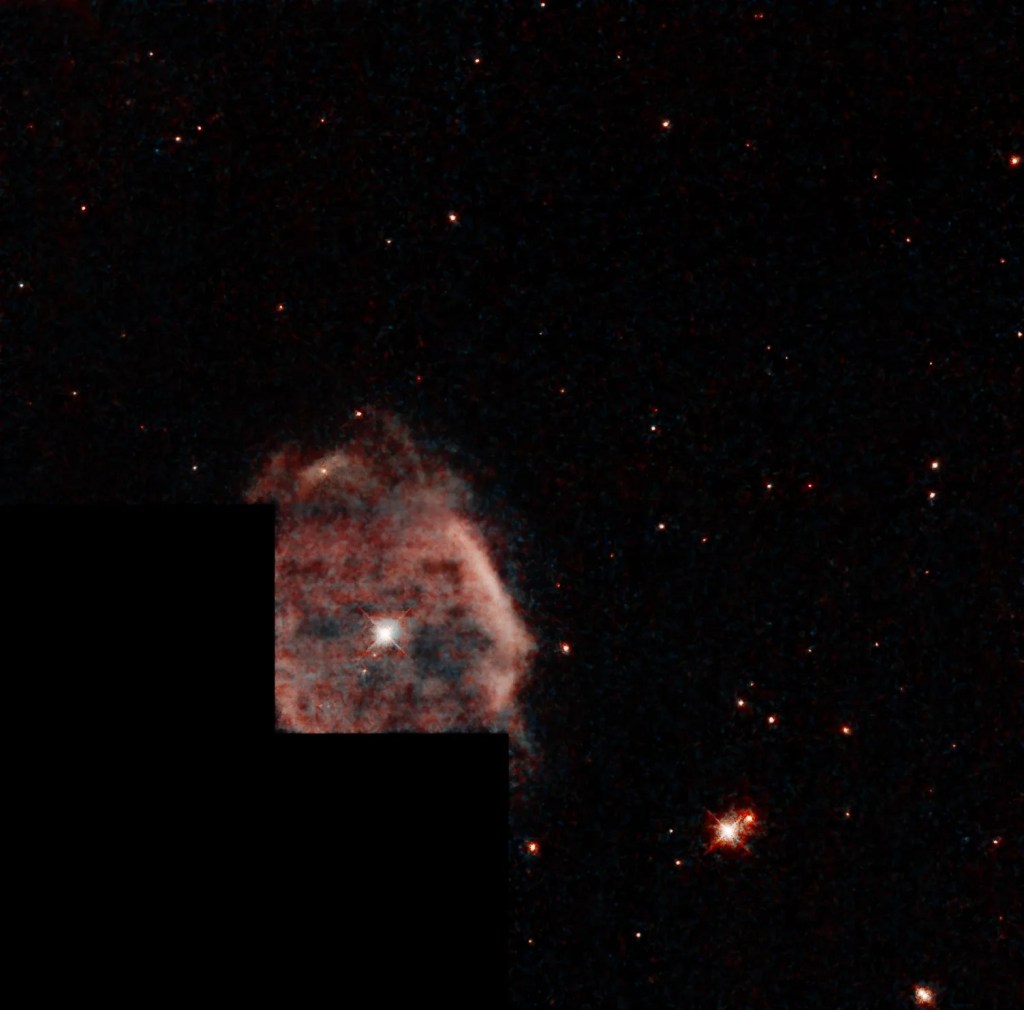
This shell of gas is expanding outward, away from the dying star within.
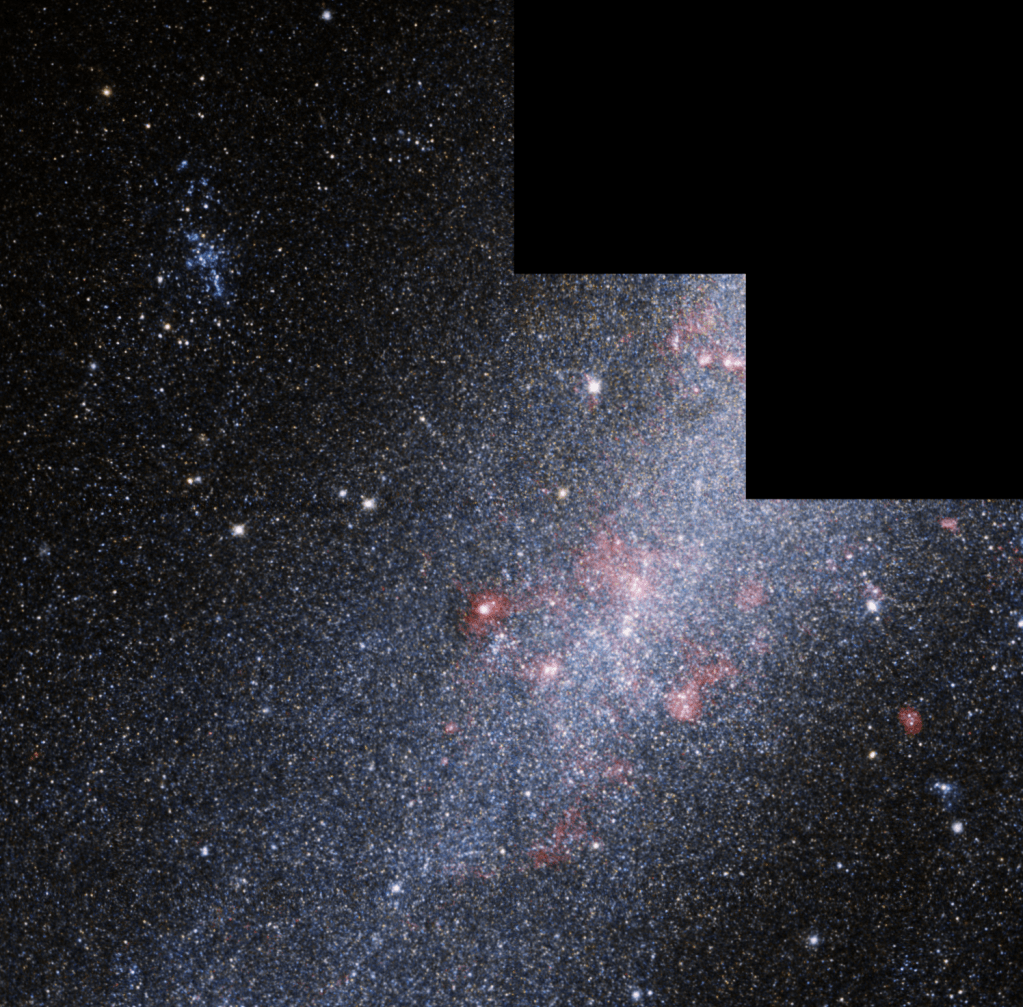
This barred spiral galaxy was first spotted by British astronomer William Herschel in April 1793 in the constellation Draco.
































